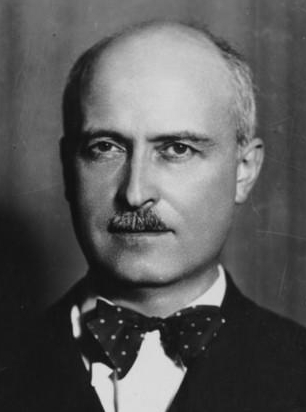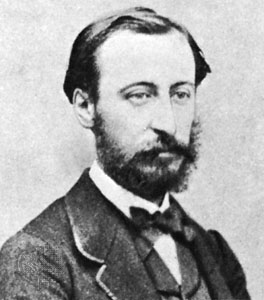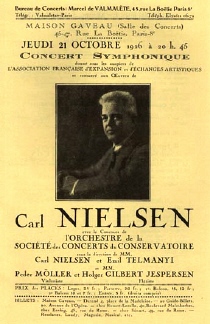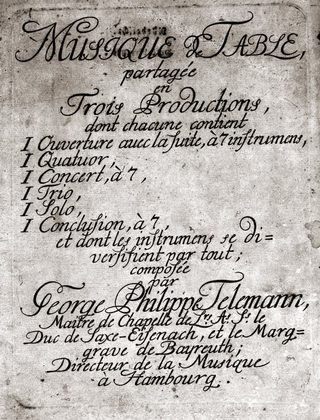Related Research Articles

Emmanuel Pahud is a Franco-Swiss flautist.

Peter-Lukas Graf is a Swiss flautist born in Zürich, Switzerland. He was a pupil of André Jaunet, and later attended the Paris Conservatoire, where he won first prize with Marcel Moyse and Roger Cortot. Besides playing the flute both in orchestras and as a soloist, he is a conductor, and spent several years exclusively as an orchestra and opera conductor. He is also a teacher, and has taught at the Basel Music Academy since 1973 and at the Music Academy Accademia Lorenzo Perosi in Biella. Graf played at James Galway's wedding in May 1972. In 2005 Graf received an honorary doctorate from the Academy of Music in Kraków.

The Brandenburg Concertos by Johann Sebastian Bach are a collection of six instrumental works presented by Bach to Christian Ludwig, Margrave of Brandenburg-Schwedt, in 1721. The original French title is Six Concerts Avec plusieurs instruments, meaning "Six Concertos for several instruments". Some of the pieces feature several solo instruments in combination. They are widely regarded as some of the greatest orchestral compositions of the Baroque era.

Jacques François Antoine Marie Ibert was a French composer of classical music. Having studied music from an early age, he studied at the Paris Conservatoire and won its top prize, the Prix de Rome at his first attempt, despite studies interrupted by his service in World War I.
The Concertino da camera for alto saxophone and eleven instruments was written by Jacques Ibert in 1935. Ibert dedicated the work to saxophone pioneer Sigurd Raschèr, who premiered the first movement in 1935. Later that year, Ibert completed the second movement, which was performed for the first time in its entirety by Raschèr in December 1935.

The Violin Concerto No. 3 in G major, K. 216, was composed by Wolfgang Amadeus Mozart in Salzburg in 1775 when he was 19 years old. In a letter to his father, Mozart called it the "Straßburg-Concert". Researchers believe this epithet comes from the motive in the third movement's Allegretto in the central section, a local dance that already had appeared as a musette-imitating tune in a symphony by Carl Ditters von Dittersdorf.
The Piano Concerto No. 5 in F major, Op. 103, popularly known as The Egyptian, was Camille Saint-Saëns' last piano concerto. He wrote it in 1896, 20 years after his Fourth Piano Concerto, to play himself at his own Jubilee Concert on May 6 of that year. This concert celebrated the fiftieth anniversary of his début at the Salle Pleyel in 1846.

The Piano Concerto No. 4 in C minor, Op. 44 was composed by Camille Saint-Saëns in 1875. It was premièred on October 31, 1875, at the Théâtre du Châtelet of Paris, with the composer as the soloist. The concerto is dedicated to Anton Door, a professor of piano at the Vienna Conservatory.
The Concierto pastoral is a flute concerto by Joaquín Rodrigo. Rodrigo wrote the work during 1977–1978 on commission from James Galway, who had first encountered the composer's work in 1974 when he asked permission to transcribe the Fantasia para un Gentilhombre for flute. Galway gave its premiere on October 17, 1978, in London, with Eduardo Mata conducting the Philharmonia Orchestra.
Ferdinand David's Concertino for Trombone and Orchestra, Op. 4, was composed in 1837. It was dedicated to Karl Traugott Queisser, who was a good friend of David, and also played in the Gewandhaus Orchestra, where David was concertmeister.

The Concerto for Flute, Harp, and Orchestra in C major, K. 299/297c, is a concerto by Wolfgang Amadeus Mozart for flute, harp, and orchestra. It is one of only two true double concertos that he wrote, as well as the only piece of music by Mozart for the harp. The piece is one of the most popular such concertos in the repertoire, as well as often being found on recordings dedicated to either one of its featured instruments.
Saint-Saëns' Cello Concerto No. 2 in D minor, Op. 119, is written in two movements, like his Fourth Piano Concerto. It was composed in 1902 and is dedicated to the Dutch cellist, Joseph Hollman, who gave the first performance on February 5, 1905 in Paris. The Second Concerto is much more virtuosic than the First, but does not possess the thematic inventiveness and harmonic intricacy of the First.
The Strathclyde Concertos are a series of ten orchestral works by the English composer Sir Peter Maxwell Davies.
Katherine Bryan is a British flautist. She was appointed Principal Flute of the Royal Scottish National Orchestra in Spring 2003, at the age of 21.

Carl Nielsen's Concerto for Flute and Orchestra was written in 1926 for Holger Gilbert-Jespersen, who succeeded Paul Hagemann as flautist of the Copenhagen Wind Quintet. The concerto, in two movements, was generally well received at its premiere in Paris in October 1926 where Nielsen had introduced a temporary ending. The first complete version was played in Copenhagen the following January. The flute concerto has become part of the international repertoire.
Concerto da camera, or in English chamber concerto, originally was one of the two types of concerto grosso, the other being the concerto da chiesa. The concerto da camera had the character of a suite, being introduced by a prelude and incorporating popular dance forms. Antonio Vivaldi and Georg Philipp Telemann were great exponents of this form of music. Later it became a popular name for any concerto in a chamber music or chamber orchestra setting.
The Flute Concerto is a concerto for flute and orchestra by American composer Christopher Rouse. The work was jointly commissioned by Richard and Jody Nordlof for flautist Carol Wincenc and by Borders Group for the Detroit Symphony Orchestra. It was completed August 15, 1993 and premiered on October 27, 1994 at Orchestra Hall in Detroit, with conductor Hans Vonk leading Carol Wincenc and the Detroit Symphony Orchestra. The piece's third movement is dedicated to the memory of James Bulger, an English toddler who was murdered in 1993 by two ten-year-old boys.
André Jolivet wrote his first Flute Concerto in 1949. It is scored for solo flute and strings and was premièred on 24 January 1950 by soloist Jean-Pierre Rampal. Jolivet wrote a concerto for flute and percussion in 1965.

Tafelmusik is a collection of instrumental compositions by Georg Philipp Telemann (1681–1767), published in 1733. The original title is Musique de table. The work is one of Telemann's most widely known compositions; it is the climax and at the same time one of the last examples of courtly table music.
Sarah Louvion is a French classical flautist. The award-winning player has been the principal flute of the Frankfurter Opern- und Museumsorchester from 2002, and is active as a soloist and chamber musician. She has given international master classes.
References
- ↑ "Unsung Concertos Jacques Ibert: Flute Concerto". Interlude.
- ↑ "Flute Concerto (Ibert, Jacques)". IMSLP. Retrieved 25 April 2020.